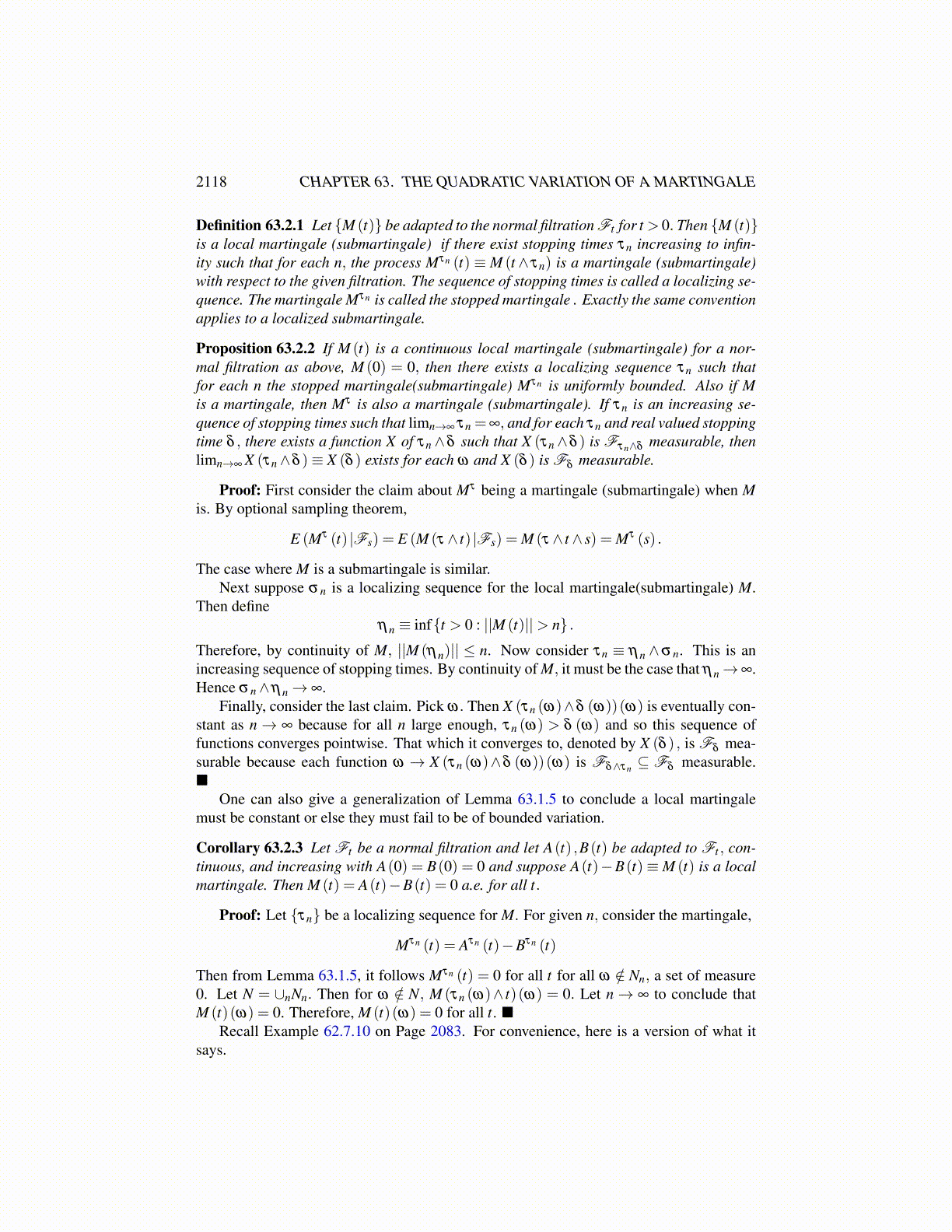
2118 CHAPTER 63. THE QUADRATIC VARIATION OF A MARTINGALE
Then from Fatou’s lemma,
E
(∑k≥0
(ξ k,(M (τk+1∧ t)−M (τk ∧ t)))
)2≤
lim infq→∞
E
( q
∑k=0
(ξ k,(M (τk+1∧ t)−M (τk ∧ t)))
)2
≤ C2E(||M (t)||2
)Now here is an interesting lemma which will be used to prove uniqueness in the main
result.
Lemma 63.1.5 Let Ft be a normal filtration and let A(t) ,B(t) be adapted to Ft , continu-ous, and increasing with A(0) = B(0) = 0 and suppose A(t)−B(t) is a martingale. ThenA(t)−B(t) = 0 for all t.
Proof: I shall show A(l) = B(l) where l is arbitrary. Let M (t) be the name of themartingale. Define a stopping time
τ ≡ inf{t > 0 : |M (t)|>C}∧ l∧ inf{t > 0 : A(t)>C}∧ inf{t > 0 : B(t)>C}
where inf( /0)≡ ∞ and denote the stopped martingale
Mτ (t)≡M (t ∧ τ) .
Then I claim this is also a martingale with respect to the filtration Ft because by Doob’soptional sampling theorem for martingales, if s < t,
E (Mτ (t) |Fs)≡ E (M (τ ∧ t) |Fs) = M (τ ∧ t ∧ s) = M (τ ∧ s) = Mτ (s)
Note the bounded stopping time is τ∧t and the other one is σ = s in this theorem. Then Mτ
is a continuous martingale which is also uniformly bounded. It equals Aτ −Bτ . The stop-ping time ensures Aτ and Bτ are uniformly bounded by C. Thus all of |Mτ (t)| ,Bτ (t) ,Aτ (t)are bounded by C on [0, l] . Now let Pn≡{tk}n
k=1 be a uniform partition of [0, l] and letMτ (Pn) denote
Mτ (Pn)≡max{|Mτ (ti+1)−Mτ (ti)|}ni=1 .
Then
E(
Mτ (l)2)= E
(n−1
∑k=0
Mτ (tk+1)−Mτ (tk)
)2
Now consider a mixed term in the sum where j < k.
E((Mτ (tk+1)−Mτ (tk))
(Mτ(t j+1
)−Mτ (t j)
))